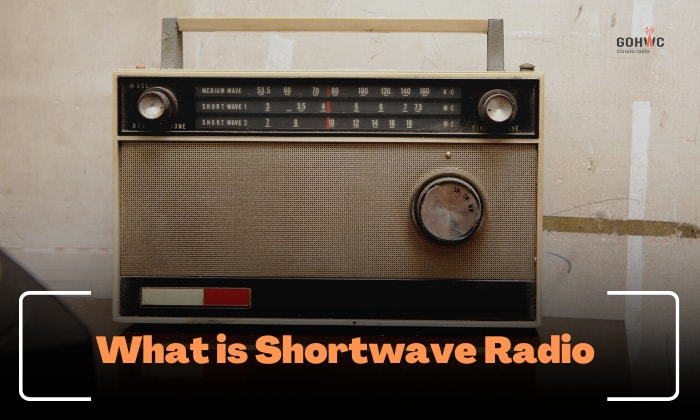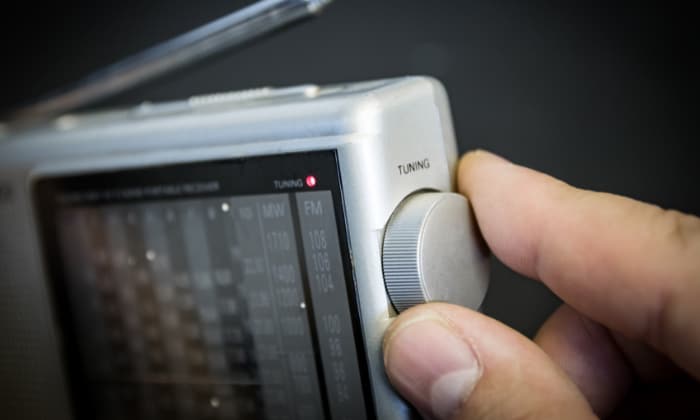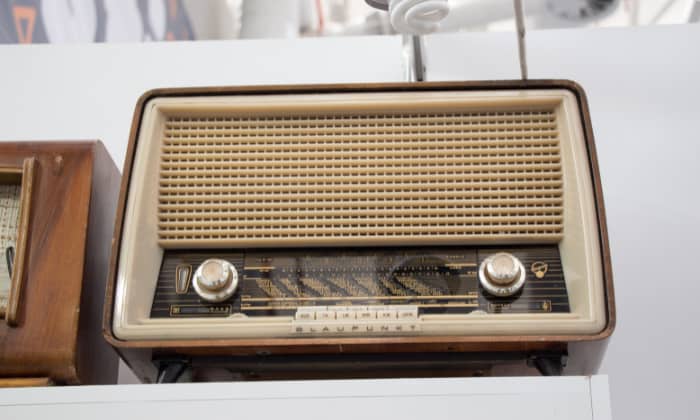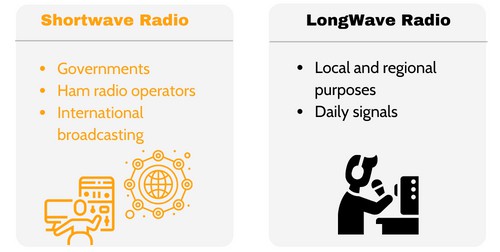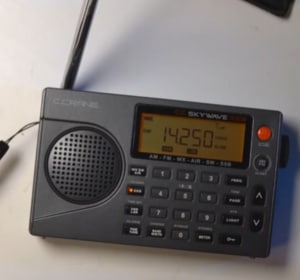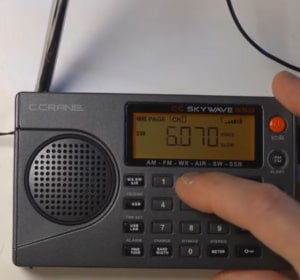Shortwave radio refers to a type of radio communication that operates on shortwave (SW) radio frequencies. Although it does not have a specific frequency range, shortwave radio typically encompasses the high-frequency band (HF), which spans from 3-30 MHz or wavelengths of 10–100 meters.
It is a unique source of entertainment and information, contrary to the belief that it is solely for listening to old hits.
So if you are still wondering what short radio is, this article is for you. Keep reading as we explore the world of shortwave radios. As extras, we will answer the question, “Is shortwave radio dead?”. Let’s get started!
Contents
Overview of Shortwave Radio
Historical Context and Evolution
The development of shortwave radio technology is credited to Guglielmo Marconi, a pioneer in the field, and his helper, Charles Samuel Franklin.
Together, they conducted extensive research on the transmission properties of shortwave waves to assess their viability for long-distance communication, in the early 1920s.
- In June and July 1923, Marconi and Franklin established a sizable antenna at Poldhu Wireless Station and discovered that they could send wireless transmissions that reached the Island’s of Cape Verde.
- They continued their work and in 1924, Marconi successfully transmitted a shortwave radio signal from Poldhu to a yacht in Beirut, marking a new chapter in their inventions.
Marconi and Franklin successfully obtained contracts from the British General Post Office (GPO) to carry out installations of various telegraphy circuits of the radio in countries such as Canada, India, and Australia.
- These efforts led to a breakthrough in the 1930s and 1940s, with the establishment of powerful transmitters that could reach global audiences. Eventually, more people discovered that shortwave radios were cheaper and more efficient than long wave radios.
How Does Shortwave Radio Work
Shortwave radio is a type of radio frequency, similar to FM and AM.
- It works by utilizing electromagnetic waves projected by the antennas in specific directions.
- These waves have wavelengths, allowing them to travel long distances by reflecting off the earth’s ionosphere.
- The ionosphere has electrically charged atoms in the upper atmosphere that can reflect radio waves to the earth’s surface at greater distances. Often, they can go beyond the horizon.
However, keep in mind that for the radio to function correctly, you need to have an antenna capable of receiving transmissions with sufficient distance between the transmitter and the receiver.
Uses and Applications of Shortwave Radio
Shortwave radio has numerous practical uses and applications. Here are a few of the most common ones:
Here are the possible uses:
Shortwave radio is a popular medium for broadcasting among government agencies, religious groups, and news organizations as it enables them to reach a worldwide audience.
- Source of Entertainment. Shortwave radio is not just for broadcasting, it can also provide entertainment. It offers a diverse range of content that people can enjoy as a source of recreation. This includes music, talk shows, and even drama.
- Ham Radio Operators. Shortwave frequencies are essential for ham radio operators to transmit information. As it is a hobby, these operators can make use of it for contests, events, or recreational purposes. Furthermore, they can use it as a means of communication.
- Marine Communications. Shortwave radio is a useful tool for marine communications, particularly in regions with unreliable internet connectivity. It operates on a higher frequency and enables communication over long distances.
- During Disasters. In such emergencies, shortwave radio comes in handy. It can reach a wider audience in a short time and cannot be easily destroyed. In addition, It has various locally based stations.
Shortwave radio has numerous applications for different purposes and in various situations. Here are a few:
- Maritime Communication. Shortwave radio enables communication between control centers in the maritime industry, ensuring safety. It also enables ship-to-ship communication and can be utilized for weather forecasting and navigation.
- Recreation and Hobbyist. Many users, including ham radio operators, experiment with shortwave radio, especially when participating in contests or events.
Is Shortwave Radio Still Used?
Yes, shortwave radio is still used. It is preferred over internet radios in areas with disasters or limited infrastructure. Because of its large audiences in parts of Africa and Asia, countries like Japan, Iran, China, and India still use it as their preferred means of communication.
Shortwave vs LongWave Radio
No, shortwave and long wave radio are not the same. Here is the difference in terms of frequency range, usage, and quality of sound:
1. Usage
Shortwave radios are often used by governments, ham radio operators, and for international broadcasting. They are preferred because they allow signals to travel long distances, reaching a larger audience.
In contrast, long wave radio is more suitable for local and regional purposes. It is often used for daily signals or navigation due to its lower frequency range.
2. Frequency
Shortwave radio operates on a higher frequency range of 3-30MHz and has a wavelength of 10 to 100 meters. On the other hand, long wave radio uses a lower frequency range of 153KHz to 279KHz and has a physical wavelength of over 1000 meters
3. Quality of Sound
Shortwave radios produce high-quality sound as they operate on a high frequency range and bounce back on various surfaces, remaining strong.
In contrast, long-wave radios produce poor-quality sound because they run on lower frequencies and have unreliable transmitters, making them susceptible to atmospheric interference.
Getting Started With Shortwave Listening
These are the steps to get you started with shortwave listening:
Step 1: Discover the Type of Radio You Want
There are two types of radios: analog and digital radio. Analog radios are quite cheap and offer various options, including AM and single-sidebands. However, digital radios are more costly but provide greater accuracy and can reduce distorted sounds.
Before you can buy, familiarize yourself with the shortwave radio basics. Consider joining a shortwave radio listening club or connecting with friends online to learn more and get facts about how these radios work and the various transmissions available.
In addition, understand which mode is used for broadcast and pick the most common. Once you know these factors, you can decide which type of radio best suits your needs.
Step 2: Get the Right Equipment
You might need a receiver, antenna, and accessories, like headphones, to enhance your radio experience. Let’s look at each below.
- Antenna
If you want to improve your shortwave radio listening experience, invest in a high-quality external antenna. In case your radio already has an antenna, adding a long wire can help boost your reception.
- Receiver
When searching for a receiver, aim for a high-quality one. Receivers enable you to access multiple shortwave radio stations. Additionally, consider the features of your receiver to ensure the optimal listening experience.
- Accessories
If you want to enhance your listening experience, you might want to consider getting an SWR meter or a manual tuner along with your headphones. Moreover, a frequency chart can be useful in providing a detailed list of frequencies and their respective applications.
Step 3: Learn the Frequency Bands
After getting your equipment right, learn more about shortwave radio communication, including the available schedules, bands, and universal time. You can check your shortwave radio manual or seek extra information online.
Step 4: Tune In
After setting up your equipment and selecting the appropriate frequencies, you can turn on your radio and tune in to the best broadcast.
It is important to note that, however, while you can listen to shortwave radios like standards, the way you use them differs depending on your radio type.
In addition, certain frequencies may be more active at different times of the day. Thus, it is important to understand the World Time that shows which frequencies will be active. Lastly, note that digital tuners are more accurate than analog radios.
FAQs
How Far Can a Shortwave Radio Broadcast?
A shortwave radio broadcast can reach several thousand miles away, even across continents.
However, this range might depend on the manufacturer, the quality of the shortwave radio, and the technology applied.
Some high-quality shortwave radios with advanced technology can even pick up aircraft or sky wave radio signals.
Do You Need a License to Buy a Shortwave Radio?
No, you don’t need a license to buy a shortwave radio. It is legal to purchase one. Shortwave radios are generally considered receivers. However, you might need a license to broadcast on shortwave radio frequency.
Conclusion
Now that you have an idea of what shortwave radio is, you can explore its benefits and learn about its history. Listening to the radio can be a great experience, even though it’s not as popular as it once was.
However, try to understand the radio basics, as the frequencies vary at certain times. For instance, higher frequencies are better during the day, while lower frequencies are better at night.

Hello! I am Hart, the content writer and editor here at G0HWC. I used to be in the same local radio club with Howe, and he convinced me to join him in spreading my love for the radio with others. With a background in radio studies, I spend every day crafting accurate, easy to read content on various topics related to owning and using radios. I hope that my content can help you confidently venture in your radio journey!

